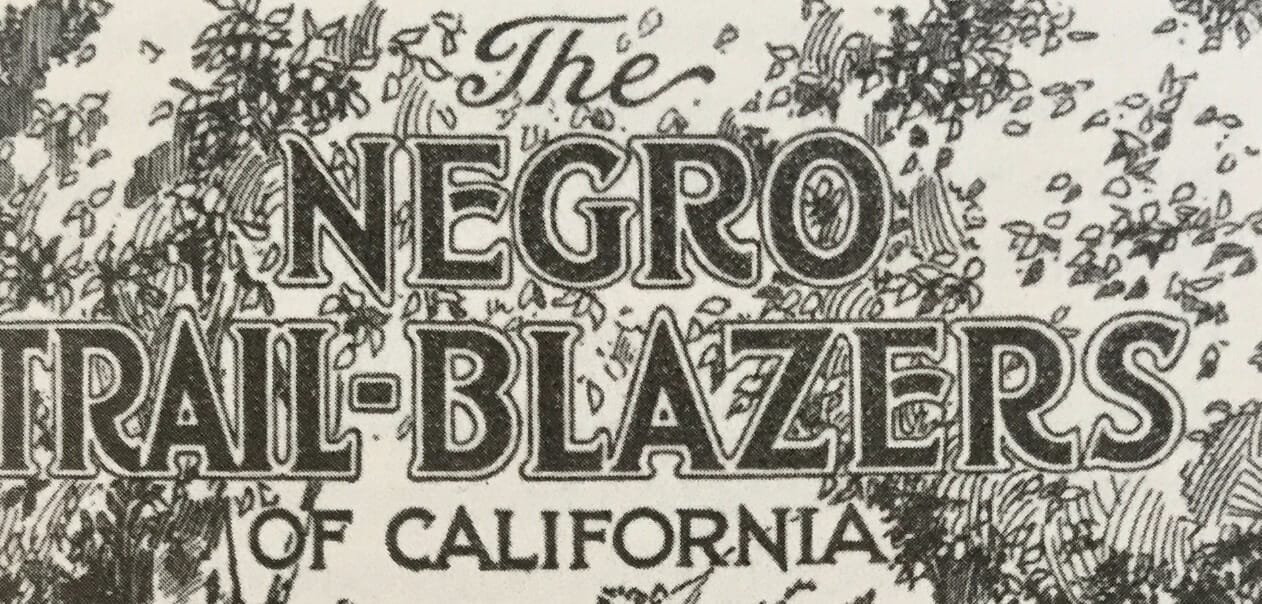Black pioneers moved to Oakland soon after the town was founded in 1852. By 1860, 23 blacks lived in Oakland Township, and 18 lived in Brooklyn (east of Lake Merritt, now part of Oakland).
Isaac and Elizabeth Flood lived in Brooklyn (Oakland). They were among the noted “Negro pioneers” of California, according to the “Negro Trailblazers of California.”
Segregated
The first schools in California, public and private, were segregated. The system of segregated schools developed without organized opposition or serious debate. Eventually, segregation became law with the California School Code of 1860 explicitily prohibited Black, Chinese, and Indian children from attending public schools.
The Black community recognized the need to educate their children in Oakland and Brooklyn.
The Flood Family
Elizabeth Thorn Scott came to California during the Gold Rush with her first husband, Joseph Scott, and settled in Placerville, CA. Her husband died soon after their arrival. Elizabeth then settled in Sacramento with her young son.
Seeing the need for a school for “non-whites,” she opened her home centrally located between M and N Streets on May 29, 1854, becoming the first “colored” private school in Sacramento.


There were 14 students in the school between the ages of 4 and 29, and their families paid $1.00 per week, and they paid her $50.00 per month. Later, the school became part of St. Andrews (AME) Church, holding classes in the basement.
Isaac Flood came to California in search of gold. In the early 1850s, he settled in the Brooklyn Township. Elizabeth and Iassc were married in 1855 (not sure when or where they met.) She retired from teaching and moved to Brooklyn.
In 1856, Elizabeth gave birth to a son, George Frances Flood, who was said to be the first “black boy” born in Alameda County. She gave birth to a daughter, Lydia Flood, in 1862.


Again, seeing the need for schools in the black community, she campaigned to get support for another school.
In 1857, she opened the first private school for Black children(open to all minorities) in Oakland, Alameda County, in her home at 1334 East 15th Street. Members of the Black community supported this effort, paying tuition in addition to taxes that covered schools their children could not attend.
Elizabeth’s goal for her school was to be competitive with White schools.

In 1863, the Shiloh A.M.E Church (now First A.M.E Church) assumed control of the school following its formal organization as a church. The Flood’s helped organize the church and were founding members. The church purchased the abandoned Carpentier schoolhouse (see Oakland’s First Schoolhouse)and moved the building to 7th and Market Streets in West Oakland. The tiny building served as the church’s chapel and housed the school. Elizabeth taught at the school until she died in 1867 (unexpectedly)at 39.
Isaac continued their quest for equal education for all children. He was a member of the California Colored Convention Movement, which challenged California’s segregation laws in the early 1870s, citing the recently enacted 14th and 15th Amendments to the U.S. Constitution.
He and a group of leaders in the Black community petitioned the School board in 1871 to end segregation.
Their daughter Lydia was among the first to attend an integrated Oakland public school, the old Swett Grammar School on 12th Avenue and East 19th Street.
Brooklyn Colored School
The expense of supporting a private school was a heavy burden on the Black community. In 1866, the parents from Oakland and Brooklyn petitioned the Oakland and Brooklyn Boards of Education to provide the education of Black children in both areas. After months of delay, the Brooklyn board voted to establish a public school in Brooklyn, which was open to children from both places.
In 1867, the Brooklyn Colored School opened in Brooklyn (now a part of East Oakland). It was the first public school for Black children in Alameda County. It was located at 1008 10th Avenue (or 1066 10th Avenue)in an old, dilapidated building that was initially a private residence (the old Manning House) and measured only 35 by 38 feet.

A young Black woman, Miss Mary Sanderson, was the only teacher from 1867-1871. She was only 16 when she started teaching at the school (Oakland Heritage Alliance Newsletter winter-spring 1994.)
In 1870, the school was located in the Adams Street Primary School room, a two-story brick building built in 1866. (Brooklyn Independent December 3, 1870.) This might explain the brick building in the photo above.
In 1871, the minimum number of students fell below the required 10. The school was forced because there were more Oakland children than in Brooklyn.

Due to its remote location, the Black children of Oakland found it challenging to get to the Brooklyn School. In 1869, the Oakland Board of Education voted to open an evening school that admitted Black children and adults. The Black community rented a building on Jefferson Street, and the Board of Education contributed $25 a month to support the school. D. Clinton Taylor, a white teacher, taught in the one-room school. The school closed in July 1869 after operating for only six months.
In 1872, Oakland’s Board of Education went against the State School code and approved integrating Oakland schools in a 5-2 vote.

More Info:
- Elizabeth Scoot Flood: Early Oakland Educator – OPL Blogs
- African American Women of the Old West By Tricia M Wagner 2007- Internet Archive
- Colored Children in Public Schools – The Elevator May 5, 1872
- Colored Children Allowed in Oakland Public Schools – Pacific Appeal May 11, 1872

Thank you for sharing this information.